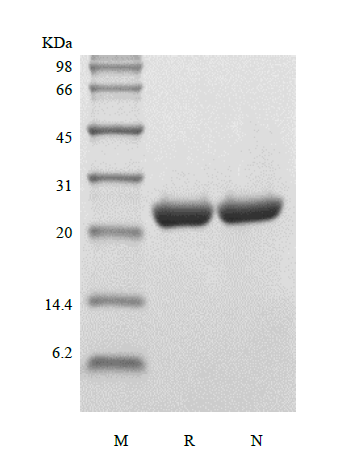How to determine the reference dosage for protein activity experiments?
All proteins which have been verified by biological activity have activity verification information on our product page, customers can check the information of cell type and ED50 value in the Biological Activity column. The methods of activity detection are different for different proteins. The methods used to detect different cells for the same protein are different. The final ED50 value is also different. In the absence of literature and reference dosage, we recommend trials for the concentration gradient in your initial use of a certain protein.
Why is ED50 a range?
Biological activity is a measurement of the biological response of a protein. Therefore, any changes in the bioactivity assay may also lead to different results. Such variations may include cell density, cell age, number of passages, nutritional status, media and additives used, as well as the experimental operator’s practices. Due to the variable nature of bioactivity assays, the same protein may not produce the same ED50 under different circumstances. For this reason, PrimeGene’s protein instructions give a range of ED50s.
How is your protein activity measured?
PrimeGene’s activity-verified protein products are usually listed as Biological Activity in the technical parameters of the product page. For example, product cat#GMP-606-09 shows activity measured by its ability to support cell attachment and spreading when used as a substratum for cell culture. In this application, the recommended concentration for this effect is typically 1-5 μg/cm². Fibronectin can also be added to the media to support cell spreading at a concentration of 0.5-50 μg/mL.
What is the relationship between the specific activity marked by ED50 or units/mg, and how to convert it?
The definition of ED50 is the cytokines concentration that can induce the half of the maximum response. This activity expression is only applicable to cytokines with an S-shaped dose-response curve. The formula for transforming ED50 (ng/ml) into specific activity (units/mg) is:

During the reconstitution of dry protein powder, it is mentioned in the manual that acid is used to dissolve, will it affect the activity of protein? When used in cell experiments, will it cause damage to the cells?
The dissolution method recommended in the instructions for the use of protein will get the best dissolution effect and ensure the most complete recovery of protein activity. A small amount of acid will not affect your experiment, after the original solution is diluted into a working solution when it is used.










 COA Application
COA Application


